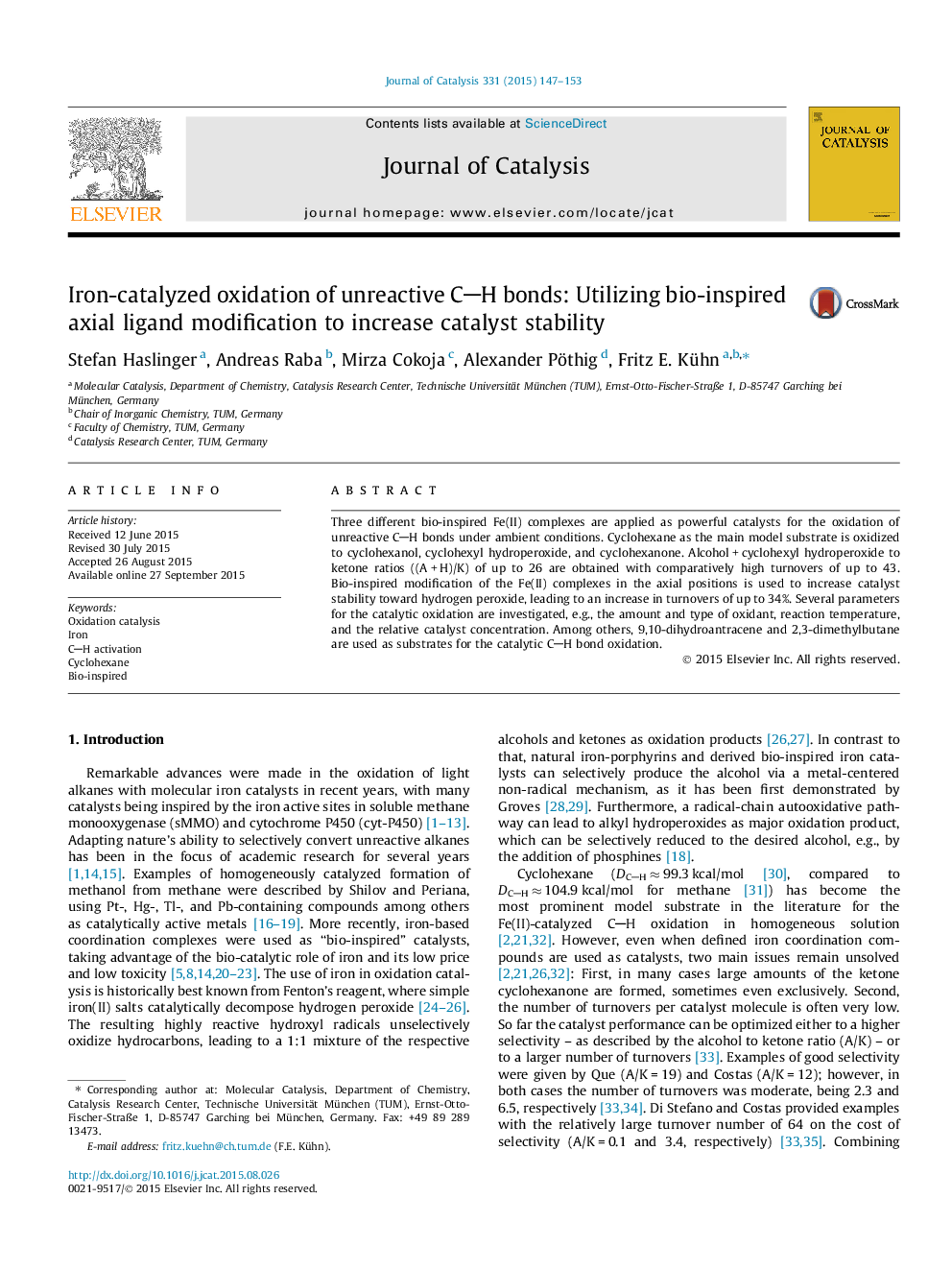| کد مقاله | کد نشریه | سال انتشار | مقاله انگلیسی | نسخه تمام متن |
|---|---|---|---|---|
| 60705 | 47543 | 2015 | 7 صفحه PDF | دانلود رایگان |

• Iron coordination compounds are used as catalysts for CH bond oxidation.
• Cyclohexane is converted to CyOOH, CyOH, and CyO ((A + H)/K = 26).
• Bio-inspired axial ligand modification increases the stability of the catalyst.
• The catalyst activity directly depends on the axial ligand.
Three different bio-inspired Fe(II) complexes are applied as powerful catalysts for the oxidation of unreactive CH bonds under ambient conditions. Cyclohexane as the main model substrate is oxidized to cyclohexanol, cyclohexyl hydroperoxide, and cyclohexanone. Alcohol + cyclohexyl hydroperoxide to ketone ratios ((A + H)/K) of up to 26 are obtained with comparatively high turnovers of up to 43. Bio-inspired modification of the Fe(II) complexes in the axial positions is used to increase catalyst stability toward hydrogen peroxide, leading to an increase in turnovers of up to 34%. Several parameters for the catalytic oxidation are investigated, e.g., the amount and type of oxidant, reaction temperature, and the relative catalyst concentration. Among others, 9,10-dihydroantracene and 2,3-dimethylbutane are used as substrates for the catalytic CH bond oxidation.
Figure optionsDownload high-quality image (99 K)Download as PowerPoint slide
Journal: Journal of Catalysis - Volume 331, November 2015, Pages 147–153